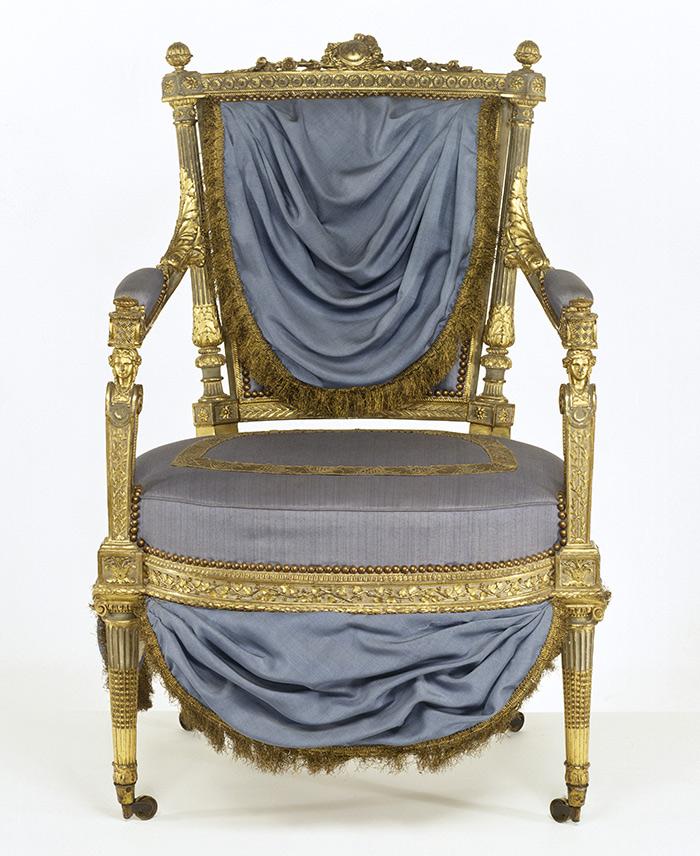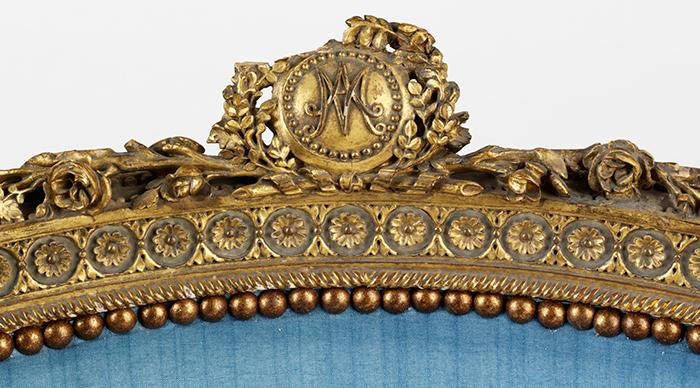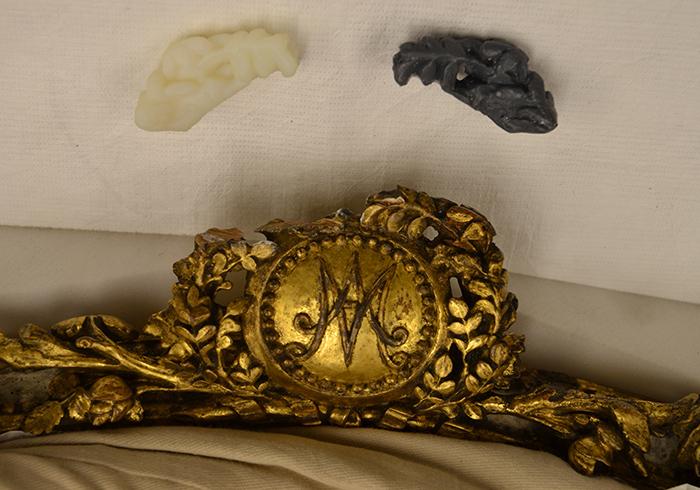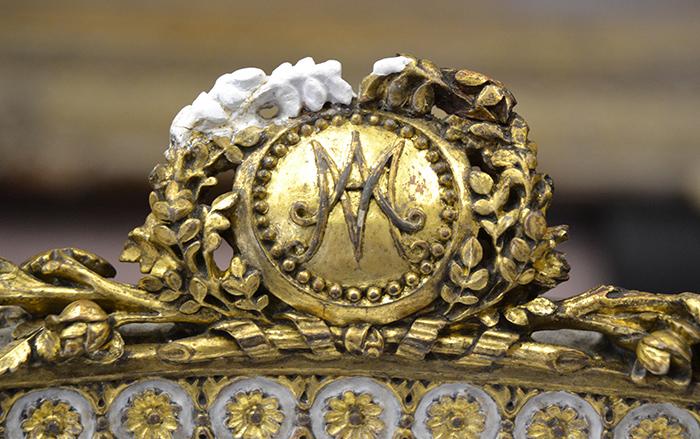3D printing is once again playing an integral role in the world of art and artifacts. In this instance, Zoe Allen, Senior Gilded Furniture and Frames Conservator, and Phil James, a technician at the Victoria and Albert Museum (V&A) in London, set out to restore a chair that once belonged to Marie Antoinette, the last Queen of France. The chair will be displayed in the new Europe 1600 to 1800 galleries scheduled to open later in 2015 at the V&A. It has been reupholstered a number of times; it was also re-gilded and re-painted. The most recent alteration was in the 1970s, when it was painted a grey-blue color and upholstered in a blue fabric.
The chair was part of a larger suite of lavish furniture produced in 1788, just one year preceding the French Revolution, by Jean-Baptiste-Claude Sené for Marie Antoinette’s palace in Saint Cloud, just to the west of Paris. The furniture was painted and also gilded by Louis-François Chatard. Both men were principal chair craftsmen and gilders to Marie Antoinette and her husband, King Louis XVI. The restored chair, like other pieces in the suite, bears the maker’s stamp.
Individual pieces in the suite are in different collections, including the Metropolitan Museum in New York and the Versailles Palace in France. The Victoria and Albert Museum has a second chair, which was not restored and, instead, serves as an example of the transformation of the object through the centuries.
Researchers at the Met Museum discovered that the chair (and the entire suite) had been originally upholstered. The fabric was a white, hand-embroidered floral print, which was still present on a fire screen, also part of the original suite.
They also found that the carved woodwork was originally partly gilded and painted white so that it matched the fabric. This inspired the V&A and Ms. Allen to consider a restoration that was more historically accurate.
Probably not surprisingly, the restoration process began with a thorough cleaning as surface dirt had obscured the finely carved details of the wood. Next, the blue paint was removed and material losses to the chair were documented. Sadly, the beautiful crest on the back of the chair that surmounts the carved monogram of Marie Antoinette was badly damaged. In fact, the only one of the chairs with that portion still intact was the one in Versailles.
Furthermore, since each piece was hand-carved, none of them were identical. That made it impossible for the restoration team to have more than a general idea of what the original carving looked like.
And this is where 3D printing comes in!
Thanks to Rozi Rexhepi, the Digital Design Artist in Residence at the V&A from April to October 2014, the digital and 3D aspects of the project were a resounding success. What the restorers did was to make a mold and cast from the portion of the crest that remained and, explained Zoe Allen, to “make a mirror image of what was already there.”
After the cast was made, it was scanned, reversed, and then the resulting 3D model was 3D printed. It doesn’t end there.
Because the restoration team wanted to use “an inert material,” something more compatible with the original wood and amenable to painting and gilding, a mold was made of the 3D printed piece and was recast. Afterwards, it was attached to the chair and gilded to match the original.
Additional restorative measures were taken, including removing castors that had been added at some point and replacing them with new feet on each chair leg, re-gilding areas of the wood where gilding had been damaged in one way or another, adding new support elements, and then re-upholstering.
Allen provides a fascinating and detailed account of the entire restoration process, although I’ll admit I’m most captivated by the role that 3D technology played in restoring this remarkable historical artifact.
With increasing frequency, we’re seeing 3D printing being used as an invaluable tool in restoring objects from the sometimes very distant past or, in some cases, replicating them when the original artifact is too fragile or otherwise not amenable to restoration.
Let us know what you think about 3D printing in this use over in the Marie Antoinette’s Chair Restored with 3D Printing forum thread at 3DPB.com.
Subscribe to Our Email Newsletter
Stay up-to-date on all the latest news from the 3D printing industry and receive information and offers from third party vendors.
Print Services
Upload your 3D Models and get them printed quickly and efficiently.
You May Also Like
U.S. Navy Lab Uses 3D Printing to Reduce Tooling Lead Time By Over 90%
The F-35 Lightning II Joint Program Office (JPO), responsible for life-cycle management of the key fifth-generation joint strike fighter (JSF) system used by the U.S., its allies, and its partners,...
Etsy Design Rule Change Reduces Selection of 3D Printed Goods
Online marketplace Etsy has implemented a rule change requiring all 3D printed goods on the site to be original designs. The update to the site’s Creativity Standards states, ¨Items produced using...
Honeywell Qualifies 6K Additive’s Nickel 718 for 3D Printed Aerospace & Defense Parts
6K Additive is renowned for manufacturing sustainable additive manufacturing (AM) powder, and offers a wide portfolio of premium metal and alloy powders that include titanium, copper, stainless steel, and nickel,...
MetalWorm Sells WAAM Systems to Research Institutes in Brazil and Malaysia
Turkish WAAM firm MetalWorm has sold a system in Malaysia and another in Brazil. This is an excellent example of a few emerging trends in additive. Firstly, WAAM was experimented...









































